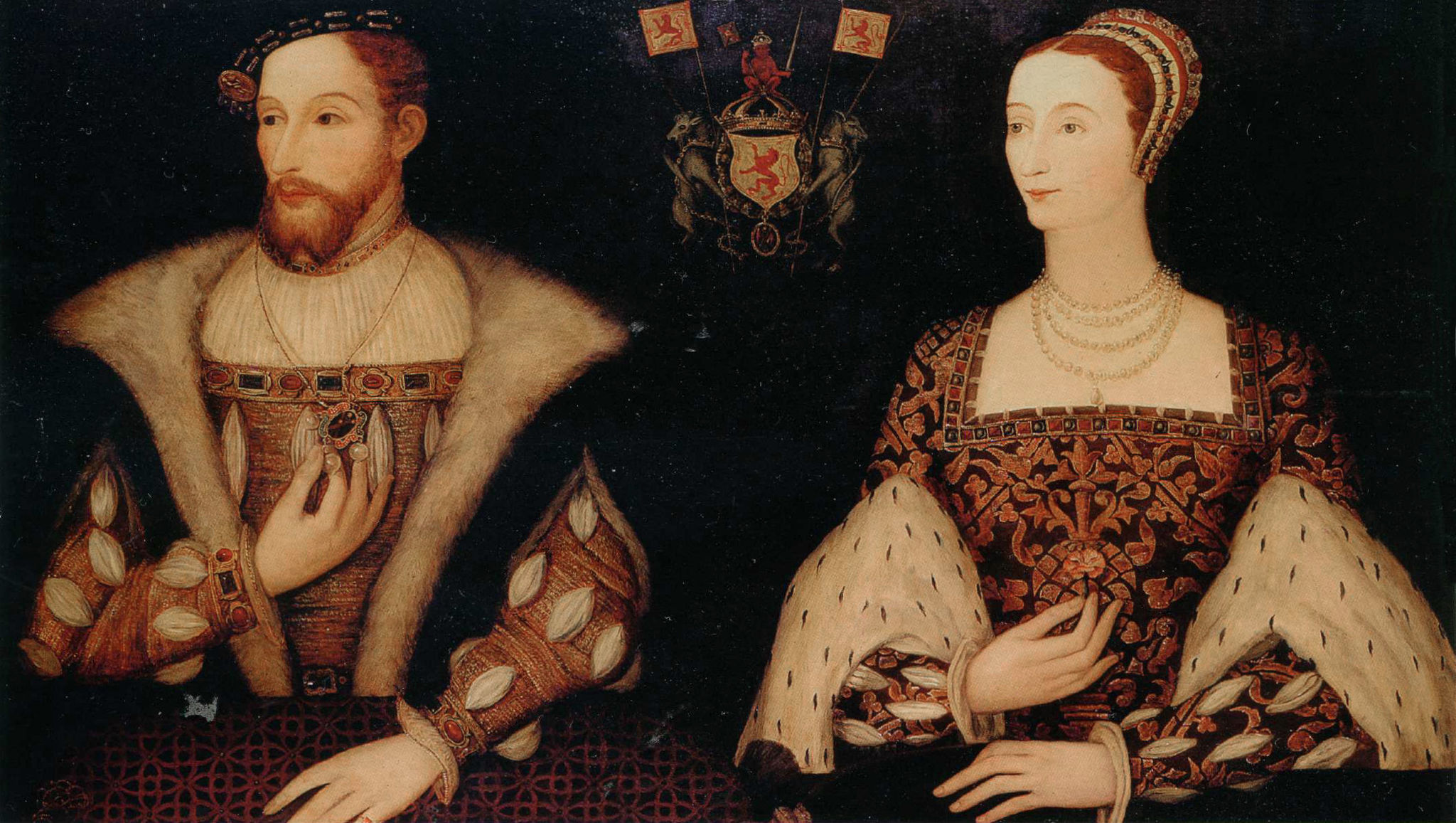
In 1536 King James V was originally betrothed to Madeleine of Valois and extensively refurbished the royal palace at Stirling Castle for her benefit. In 1537 they married in Paris and Madeleine returned with James to Stirling. Unfortunately the Scottish climate did not agree with Madeleine and she died three months after her arrival in Scotland. James started to look for a replacement immediately and Mary of Guise was an eligible French princess. The proposal also suited the French who were anxious not to forego a dynastic marriage with the Scots.
Mary of Guise was also the subject of the attention of King Henry VIII of England. His third wife Jane Seymour had died and Henry was clearly looking for a replacement and began to woo Mary. She is said to have turned him down saying "I may be a big woman, but I have a very little neck." Mary agreed to the proposal of marriage from James V, the nephew of Henry VIII, turning down the uncle to marry the nephew!
The marriage took place in 1538 and Mary was installed at the Royal Palace at Stirling Castle. Mary transformed the Palace. Visitors today can see her influence in such features as the royal crest which shows the royal standard of the unicorn and the eagle of Guise supporting the crown. The maraige resulted in the birth of a daughter, Mary. Tragically one week after the birth King James V died at Falkland from typhoid.
The infant Queen Mary was baptised and crowned queen in the Chapel Royal at Stirling Castle. She remained at the castle for the first six years of her reign. Mary of Guise was made Regent of Scotland alongside the Duke of Albany, the most senior royal male in the kingdom. Henry VIII of England proposed a marriage between his infant son, the future Edward VI of England, and the young Mary. The propsal was refused. The Scots, and in particular Mary of Guise, had decided that it was better to negotiate a French marriage to the infant dauphin of France. The job of negotiating the French marriage was given to Albany. The French were just as anxious and the marriage was agreed in 1547.
Mary, Queen of Scots went to France in 1548 and never saw her mother again. Mary of Guise was appointed Regent in Scotland during her daughter’s absence. As Regent, Mary had a difficult time but always had French forces if required to enforce her will. Her Regency coincided with the Scottish reformation and a number of nobles and gentry openly plotted a national conversion.
The climax came in 1559; the same year her daughter became queen of France on the accession of her husband as Francis II. Mary of Guise had been lenient towards her opponents but in 1559 they formed the Lords of the Congregation which declared for Protestantism and severed the military alliance with France. Mary accepted this with the threat of revolt and struggled to maintain the realm for her daughter.
Mary of Guise died in the summer of 1560 never having seen her daughter, Mary Queen of Scots’, wedding or coronation but had died knowing she had secured her daughter’s kingdom.
Mary, Queen of Scots is a huge figure in Scottish history, thanks in part to her mother's actions. Our Secrets of the Royal Mile walking tour takes place every day visiting the castle where Mary of Guise died and Mary Queen of Scots, went on to give birth to the future King James I and VI.



